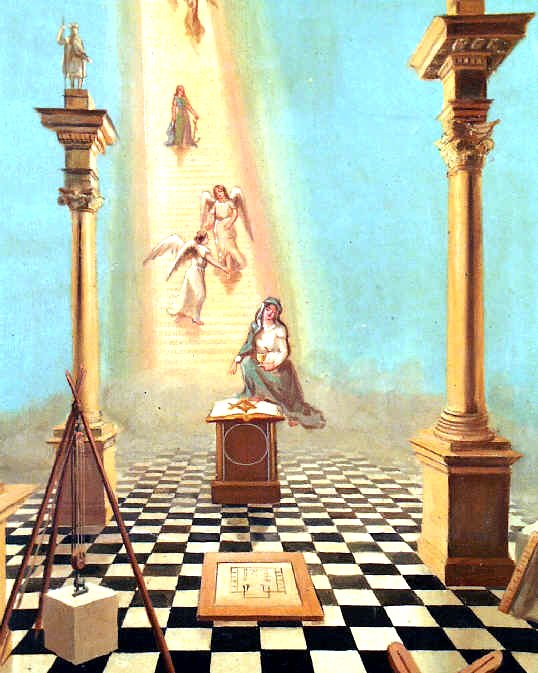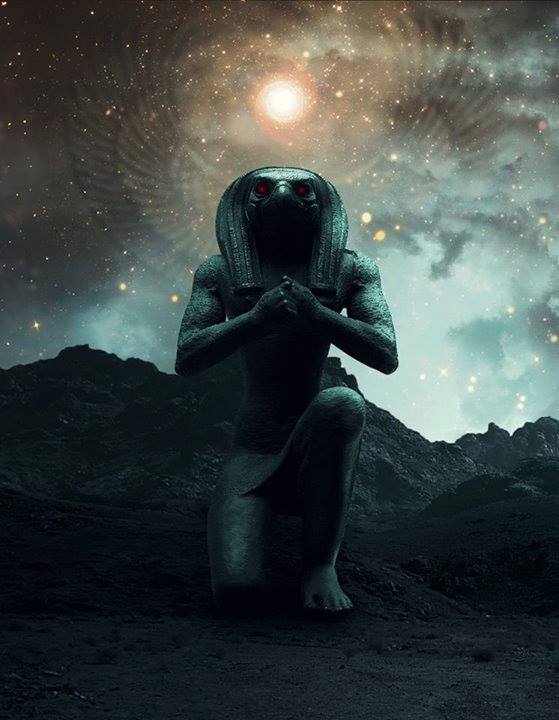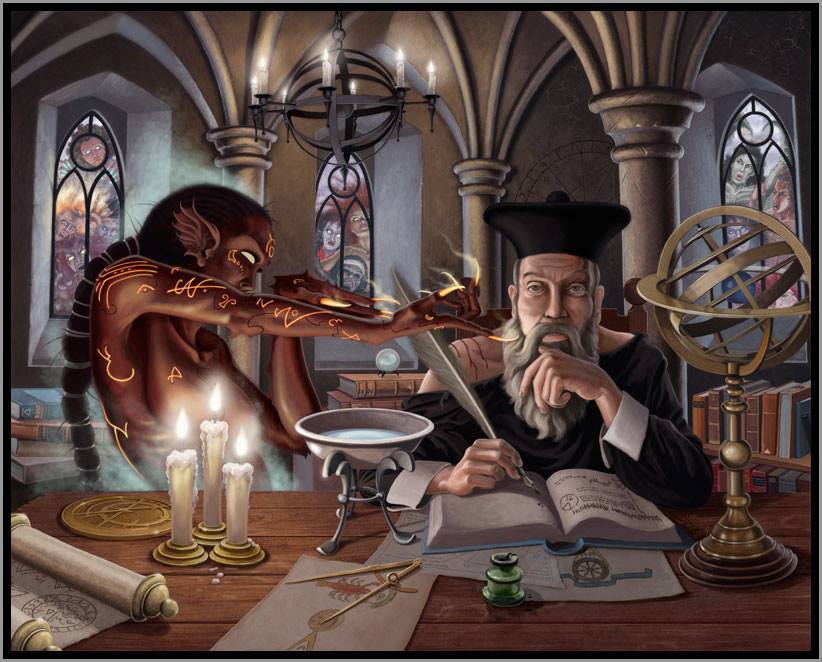The Erinyes represent a powerful force of darkness in Greek Mythology that live under the ground within the earth. They dwell in the underworld of Tartarus where even the gods had feared them for it was the Erinyes who maintained the established the natural order of things.
The Erinyes are described in Eumenides , a play written by Aeschylus (c 525 – 455 BCE), the “Father of Greek Tragedy,” as Gorgon-like with dark and lothly with loathsome ooze dripping from their eyes, rejoicing in the smell of blood and suck the blood of men. They have the ability to punish humans for crimes against the natural order and their ancestors during life and after death. The glories of men waste away against their black-robed assault.
The principle message of their wrath is a simple one, “an eye for an eye, and a tooth for a tooth.”
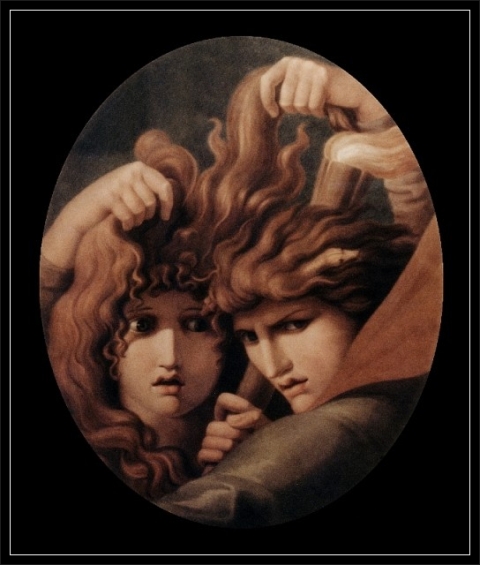
They describe themselves in the chorus of Eumenides, “We are the eternal children of night, and called curses under the earth. All-pervading destiny has assigned us their lot to pursue murderers of kindred until the earth covers them, and dying, they are not freed from us.”
When swearing an oath to Achilles in Homer’s Illiad, he calls on Zeus, Earth, Sun, and “the Erinyes,” who under earth take vengeance on men, whoever has … (the Furies) merely working their magic from under earth or if this punishment is inflicted on those under the earth, that is, the dead.
The first historical mention was discovered written on the ancient Linear B tablets found at the City of Gnosis – Knossos on the Holy Island of Crete, in the following forms: e-ri-nu e-ri-nu-we.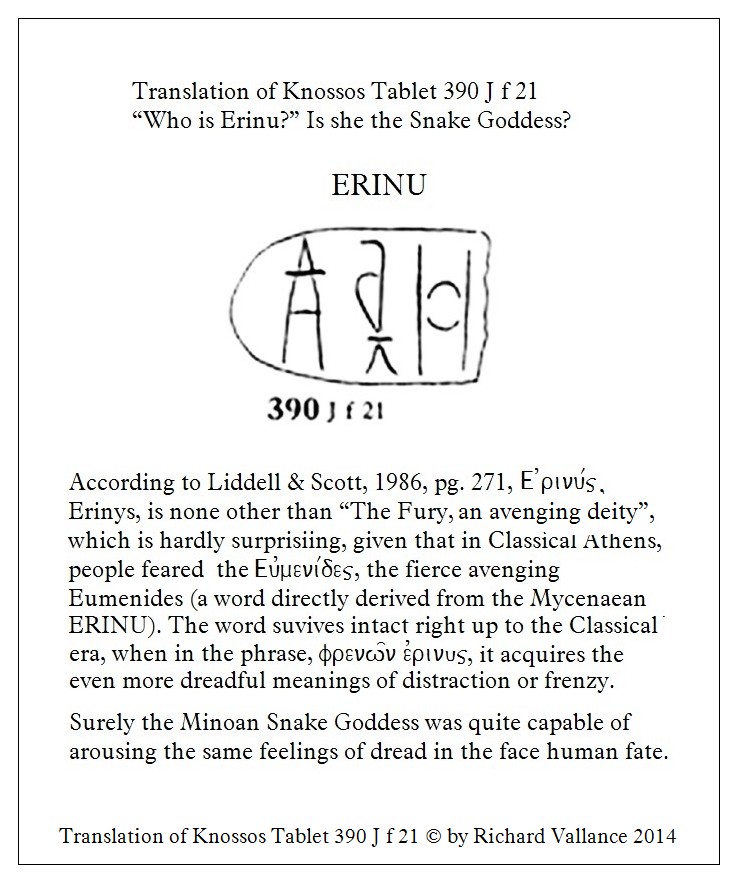
This connection to Crete also aligns with Homer’s Illiad. “One, from Ida, Most Glorious, Greatest, and Helios, You Who watch over all things and listen to all things, and rivers and earth and You Who under the earth punish weary human beings, whoever has sworn a false oath, You be witnesses, guard the oaths of trust”.
The name Ida would correspond to Mount Ida on Crete near Knossos. It is from this location where Josephus writing in the 1st century BC said the Idumeans would derive their name to become who we know as the Tribe of Idumeans or we know of today as the Tribe of Judah.
According to Hesiod’s Theogony, when the Titan Cronus castrated his father Uranus and threw his genitalia into the sea, the Erinyes and the Meliae emerged from the drops of blood when it fell on the earth (Gaia), while Aphrodite was born from the crests of seafoam.
Writing at a later date, the Roman poet Virgil named three in the Aeneid; Alecto or Alekto (“endless”), Megaera (“jealous rage”), and Tisiphone or Tilphousia (“vengeful destruction”).
Ovid writes in Metamorphoses, “(The Erinys) Tisiphone seized a torch steeped in blood, put on a robe all red with dripping gore and wound a snake about her waist, and started from her home; and with her as he went were Luctus (Grief) [Penthos] and Pavor (Dread), Terror (Terror), and Insania (Madness) (Mania) too with frantic face.”
Dante in Canto IX of the Inferno had mentioned the three deities of Erinyes who confront the poets at the gates of the city called Dis. Dante describes the Erinyes as three maiden goddesses, Demeter was worshipped under the title of Erinys in the Arkadian town of Thelpousa.
The Athenians who were Brothers with the Cretans had a sanctuary in Athens that Pausanias said was dedicated to the Erinyes. He writes;
“Hard by [the Areopagos the murder court of Athens] is a sanctuary of the goddesses which the Athenians call the August, but Hesiod in the Theogony calls them Erinyes (Furies). It was Aeschylus who first represented them with snakes in their hair.
But on the images neither of these nor of any of the under-world deities is there anything terrible. There are images of Pluto, Hermes, and Earth, by which sacrifice those who have received an acquittal on the Hill of Ares; sacrifices are also offered on other occasions by both citizens and aliens.”

Moe is the founder of GnosticWarrior.com. He is a father, husband, author, martial arts black belt, and an expert in Gnosticism, the occult, and esotericism.




